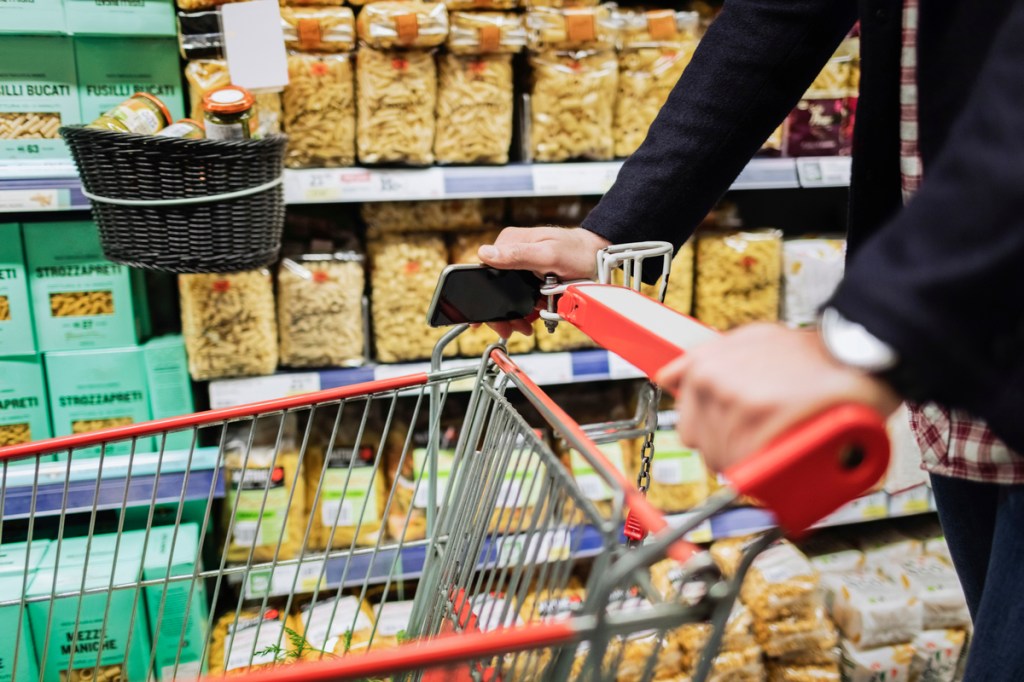This blog post is the final post of a three-part series on how retailers can use Artificial Intelligence (AI) and Machine Learning (ML) technologies to gain a competitive edge using a recommendation for a shopping list as a use case.
In the first blog post, we explained why retailers need to use AI and ML to stay competitive. We discussed the three main paths for retailers to build AI/ML capabilities and explained why the creation of a shopping list is a good use case of ML. In the second blog post, we discussed the data science and how to choose the right model and success criteria for a ML implementation – again using a recommendation for a shopping list as a use case.
In this blog post, we will discuss the issue of Product Mix when generating a shopping list using ML and some additional points which require attention in order to achieve the best shopping experience. More often than not, there are limitations to artificial intelligence and by factoring in a layer of human intelligence to the process we can ensure that our recommendations are smart, relevant and deliver a superior experience.
For our shopping list use case, we are hoping to use Machine Learning (ML) to predict which products would be purchased by a specific customer in their next store visit. Some may think that it’s as simple as calculating the prediction to buy a specific product by a specific customer and then listing the products for each customer from highest to lowest score. They would be mistaken.
While this may be possible to some degree in small operations, it is a practical impossibility to accomplish at scale, with millions of customers and tens of thousands of SKUs. In addition, there is often a dissonance between what science (i.e. probability) tells us, and the ideal customer experience. No one goes to the supermarket with a shopping list that includes only fresh products even though the probability of a shopper to buy fresh products is always the highest. The final product mix in the shopping list is critical to delivering the best shopping experience.
The Ideal Product Mix
Like any good cocktail, the ideal product mix requires some basics. In order to provide the best customer experience, we have to start by first understanding what a typical basket for any specific customer’s visit consists of. True, each customer is unique, but general observations still apply.
Here’s an example from research we conducted for one of ciValue’s grocery retailers. In this case an average Class A (i.e. Gold) customer visits the store once a week and purchases 25 products in a visit. Checking the product mix in the basket of the average Gold customer over the last 12 month we identified 3 main groups of items:
- Weekly products – 38 items purchased on a regular basis. Eight of the 25 a basket’s items are from this group.
- Monthly products – 72 items purchased on a monthly basis. Six products of the basket’s products are from this group.
- One-time products – 250 items were purchased only once or twice during the 12-month period. The 11 remaining products in the basket are from this group.

Looking at this mix, we can conclude that if we generate a shopping list only based on popularity, it would feature a list of the 38 weekly products, which represents about 30% of the required items. This list is simply not useful to customers and will seems strange and not in alignment with her sopping pattern. So how do we generate a smart shopping list?
Product Mix Optimization Best Practices
Hitting the mark with product mix required considering a few issues, and making educated decisions in order to offer solutions. Here are some questions (and answers) to guide you through the thinking process:
1.Does the list reflect replenishment cadence?
In order to create a smart shopping list, we must throw purchase cadence into the mix. The scoring of each product making/not making the list must reflect that the time for purchase is nearing. However, time lapse since last purchase isn’t enough on its own, as some products are ‘life stage’ products, and customers cease to buy them because they are no longer necessary, like baby food.
It’s important to note that not all faults are equal. If the list shows a product in its usual replenishment, window shoppers might appreciate it, even if they decide not to make a purchase. However, putting an incidental product they purchased recently, might seem strange.
The solution here is to fine-tune the score by attaching different errors weights to ‘false positives’ outside a reasonable range. For example, if a normal replenishment cycle is two months, then a false positive outside the normal range would get a higher weight. Following that method, various low purchase frequency products’ competing score would increase in aligment with their replenishment cycle.
2. How to use popular products to prioritize low cadence products?
In some cases, a customer buys one product often, but doesn’t purchase its complementary product as frequently. In this case, we can utilize the fact that one product is now on the list, to add complementary items that the customer isn’t accustomed to purchase too often, assuming they’re purchased elsewhere.
3. How to group similar products together and/or eliminate alternatives?
When generating a list, it wouldn’t make sense to include a few alternatives to the same product. It’s much more strategic to group these alternatives together- for example, various package sizes- or including the highest scoring products while excluding others from the list.
4. How to prevent brand domination (and avoid ‘promotional’ vibe in the list)?
Generating an effective list requires brand variety. If one brand overwhelmingly dominates the list, it could seem like a promotional, or ‘paid for’ list. This has a double harmful effect. First, the list isn’t optimal. Second, customers may conclude that the retailer has a bias.
5. What categories should be included in the list?
The short answer here is ALL categories. The longer is this: a customer visits the supermarket to purchase from a number of categories. Make sure that the list includes representations from the various categories from which this customer regularly purchases. This can be used as a reminder in case a category is mistakenly skipped.
6. How to prioritize products based on the relevant channel (i.e. online vs. offline)?
Prioritizing isn’t just about products, brands, and categories. When creating the basics for your list, prioritization should be based on the channel as well. For example, if the list is displayed on a mobile app, it would make sense to give priority to the items this customer routinely purchases in the App.
7. Should seasonality be considered when generating a list?
Seasonality is important. Customers expect to find products relating to the current season in the list, even if they didn’t purchase them recently. This works from the opposite aspect as well. Just because they recently purchased seasonal items, like chocolate Easter eggs, doesn’t mean they’d want these items routinely included in their list.
8. What weight should be given to promotional efforts in the list?
An effective list should take into account other retailer initiatives, such as promoting private labels, as well as showcasing products that are in promotion. In many cases, customers don’t have any specific brand preference. Such cases, in which brand loyalty index is low, may serve as opportunities to replace a product from the list by another that’s under promotion, or by a retailer’s private label product. If retailers are cautious not to overdo it, they could get customers to switch to brands preferred by the retailer.
Key Takeaways
Artificial Intelligence (AI) and Machine Learning (ML) technologies can help retailers improve performance in many areas of their business, including shopping recommendations, personalization, churn prediction, demand prediction and assortment, price and promotion optimization. Retailers can build AI/ML expertise by hiring data scientists, selecting and fine-tuning algorithms from a vast library of generic algorithms or by partnering with experts such as ciValue that have developed retail industry-specific expertise and AI solutions for businesses.
ciValue has deep expertise in building advanced AI solutions for the retail industry. Our global clients use our solutions to grow customer value by delivering a truly personalized customer experience. Even an apparently simple machine learning solution such as a recommendation for shopping list can be tricky to implement in practice because of inherent technology limitations. ciValue has mastered the art and science of delivering the best customer experience by adding a layer of human/natural intelligence for a final touch. Remember as smart as it may be, at the end of day, the algorithm still isn’t the one cooking dinner from the items in the shopping basket.




